Staying safe during a wildfire
We're here to help protect you before, during and after a natural disaster.
Here's a quick view of what to do before a natural disaster hits.
-
Step 1 of 4 Create an evacuation plan.
-
Step 2 of 4 Grab your survival kit.
-
Step 3 of 4 Gather important documents.
-
Step 4 of 4 Photograph your property.
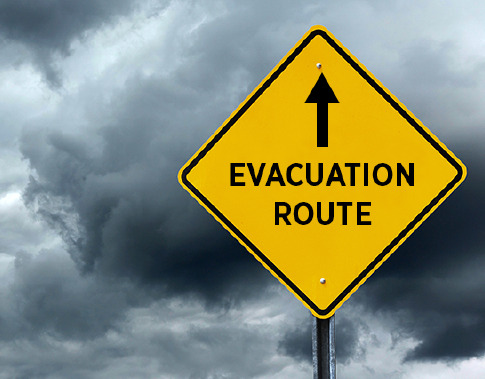

Wildfire evacuation: We're here to help.
When you're looking for a place to stay, we may be able to help you save on hotels during an evacuation.
Learn more about how we can help

Know how to evacuate your pet.
When you're making your evacuation plan, include your pets or livestock. Make sure your pets have the supplies they need like food and medication. Evacuating livestock may be a larger task, so it's important to establish and practice a plan. Use these checklists to help you prepare to get everyone out safely, including your animals:

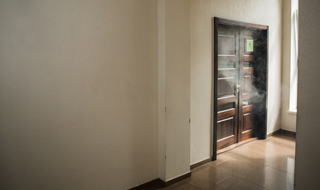
Be ready to react.
Designate a safe room or go to a community building where smoke levels are lower. The designated safe room should be closed off from outside air. Include a portable air cleaner to keep indoor pollution levels low. Be prepared to place wet towels under door and window openings.
Learn more about how we can help
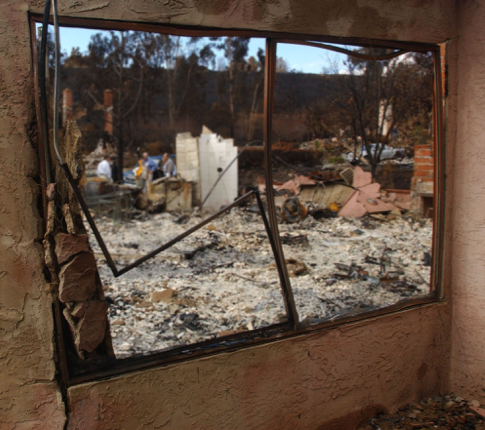
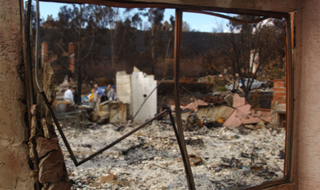
Know what to do outside.
If there is a safe building nearby, get inside immediately. If not, go to an area clear of vegetation. Don't go outside until the fire has passed and the outside temperature has dropped. If you are in a vehicle and can't get to a safe building, turn on headlights and hazard lights to make your vehicle more visible in heavy smoke. Turn off air conditioner and close all vents.


Know what to do inside.
Turn off air-conditioning and air-circulation systems. Move furniture away from windows and sliding glass doors. Turn on lights in each room for visibility in case of smoke. Close all doors and windows, but don't lock them. Remove flammable curtains, close all metal blinds and nonflammable window coverings.
Here's a quick view of the claim process.
-
Step 1 of 4 Tell us what happened.
-
Step 2 of 4 Inspect damages and review your estimate.
-
Step 3 of 4 If coverage applies we pay for damages, minus the deductible.
-
Step 4 of 4 Repair or replace your property or vehicle.
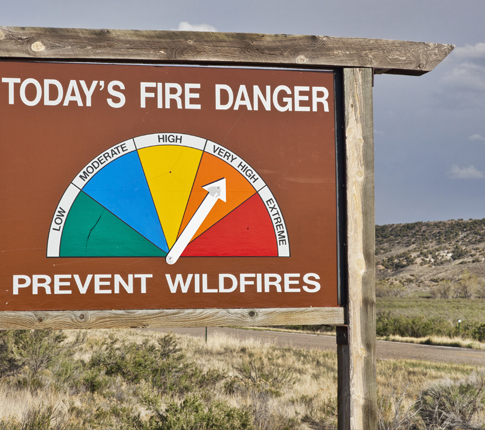
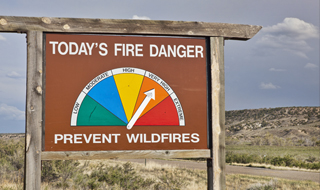
Take steps to protect your personal safety.
Listen to authorities and local news for updates to find out when it's safe to return home and if water is safe to drink.
Learn more about how we can help

Know your rights and protect your finances.
Signing over your insurance benefits to a contractor or other vendor may seem convenient at the moment. But assigning benefits may forfeit your rights under the policy to that third party and you may lose control of your claim.
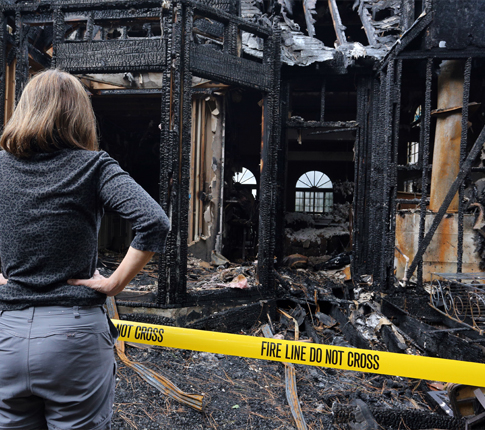
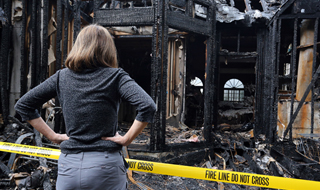
Inspect your property and assess the damage.
If property damage is found, file a claim for property. Take photos of any damage before you remove debris or make temporary repairs. If you need to make temporary repairs to prevent further damage, save the receipts for reimbursement consideration. Avoid making permanent repairs until your claims adjuster has assessed damage.
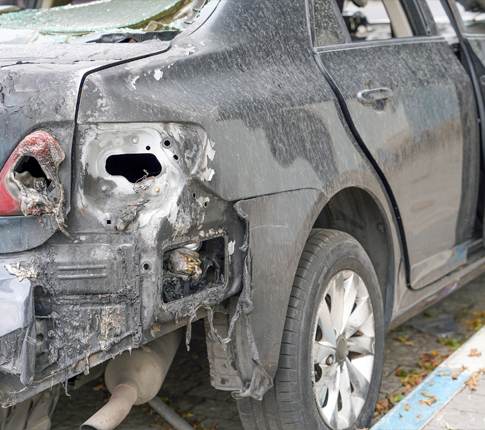
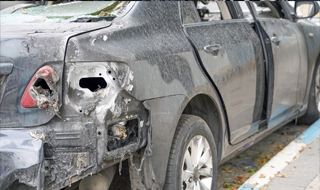
File a claim if your vehicle is damaged by a natural disaster
Take photos of any damage before you remove debris or make temporary repairs. If there's only damage to your auto glass, file an auto glass claim. If there's damage to more than just your auto glass, file an auto claim. If you need to make temporary repairs to make it safe to drive, save the receipts for reimbursement consideration.
Stay informed and help protect your family, pets and belongings.
- Review your family, home and pet evacuation plans once you receive evacuation orders or believe it's unsafe to stay.
- Review the buffer zone around your home by reducing flammable vegetation. For example, remove branches that hang over your roof or come within 15 feet of the chimney. Place flammables, such as woodpiles, propane tanks and gas grills, at least 30 feet from all structures.
- Know how to turn off your gas, electricity and water in case you need to evacuate, if time permits.
- Get your mobile devices ready for a storm.
Be ready to react.
- If you have a ladder, prop it against the house to provide fire fighters easy access to the roof.
- Remove flammable materials like lawn furniture from the area surrounding your house.
- Have a fire extinguisher ready to put out small flames.
- Store water for putting out burning embers or small fires after the fire has passed.
- Have a full tank of gas in case you need to evacuate or an evacuation notice is issued.
- Keep a piece of clothing or a towel over your nose to filter out the smoke and prevent yourself from passing out.
- Be ready to bring pets inside and to put livestock and horses in an irrigated pasture or area where fuels have been removed.
- Create a survival kit.
- Gather or inventory important documents and valuables.
- If you need to evacuate, locate an open shelter.
Take steps to protect your personal safety.
- Locate an open shelter in case you need to evacuate.
- Communicate wisely by sending text messages or using social media to reach out to family and friends. Phone systems are often busy following a disaster.
- Be aware of fallen power lines, broken gas lines and dangerous materials. Report them immediately to a power company.
- Don't get burned. Avoid hot ash, charred trees, smoldering debris and live embers. The ground may contain heat pockets that can burn you or spark another fire.
- Use a mask to help breathe.
- Protect yourself from harmful bacteria, airborne inhalation hazards and electrical hazards. Wear proper protective clothing such as rubber boots, respiratory protection, rubber gloves, goggles and head cover.
- Use caution when entering your home, and avoid bringing your children and pets until you're able to inspect your property.
- Recovering from a wildfire can be extremely stressful. These tips can help you and your loved ones know what to look for and find ways to cope.
Check Out How You Can Prepare for Wildfire

Wildfire Preparation
Video Duration: 2 minutes 35 seconds
Transcript Date: Feb. 25, 2022
Protect Your Family [00:00]
Preparing for wildfires can be as simple as being proactive and having a plan. In conjunction with helpful steps provided by IBHS, the Insurance Institute for Business and Home Safety, here are some ways to help you and your loved ones stay safe.
Protect the Outdoors [00:17]
Protect the outdoors.
Focus on the five feet immediately surrounding your home and follow these steps:
- Reduce flammable vegetation in the buffer zone around your home.
- Remove branches that hang over your roof or come within 15 feet of the chimney.
- Place flammables, such as woodpiles, propane tanks and gas grills, at least 30 feet from all structures.
- Remove flammable materials like lawn furniture from the area surrounding your house.
- Don't park boats, RVs or other vehicles in this zone.
Protect the Indoors [00:52]
Protect the indoors.
Take the necessary precautions inside your home.
- Close off all doors and windows but don't lock them, and turn off air-conditioning and air-circulation systems.
- Move furniture away from windows and sliding glass doors and turn on lights in each room for visibility in case of smoke.
- Remove any debris from screens covering vents in your attic or crawl space. If you don't have screens, cover the vents with duct tape or metal to block embers.
Stay Informed [01:31]
Stay informed.
- Sign up and listen to emergency alerts for information and instructions.
- Stay aware of the latest news from your local media and fire department.
Plan Ahead [01:42]
Plan ahead.
- Create a survival kit with items, such as water, nonperishable food, flashlights, batteries, necessary medicine and a first-aid kit.
- Have a fire extinguisher handy to put out small flames, gather or inventory important documents and valuables, and have a full tank of gas in case you need to evacuate.
- Be ready to bring pets inside, and take them with you if you need to evacuate.
- Put livestock and horses in an irrigated pasture or area where fuels have been removed.
We're Here to Help [02:21]
And always remember: We're here to help. If your property has been damaged by a wildfire and you need to file a claim, click the link above to get started.
End [2:35]
Mobile Response Locations
We are no longer stationed with our temporary disaster sites at this time, but we're still here to help in your time of need. You can file and track a claim, real-time online, by selecting the "Claim" button on this page, speak with one of our qualified claims experts or for quick access to manage your USAA accounts all in one place, take a minute to download our USAA Mobile App.